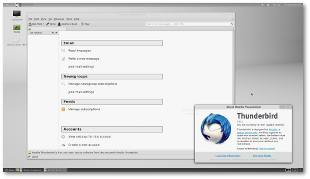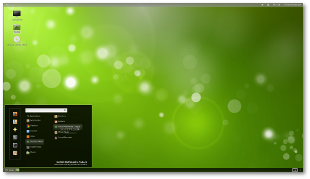

take a look at terminator.Ĭouple other quick notes. If you are interested in a more feature rich terminal that does things like split windows, etc. So unless you have a specific application or question regarding terminal performance I suggest removing xterm from synaptic or removing the menu entries if they are causing confusion and just use lxterminal for LXDE. (So this is not a debate place for terminals - roxterm,xterm,uxterm,urxvt,terminator,tilda, etc) You are using the bash shell regardless of terminal choice - So unless you are programming or have other specific needs the average user uses whats included as the default. The average desktop user does not do much in the terminal except use it when a GUI does not meet their needs for what they are trying to accomplish.
#Xterm versus uxterm code
I will look into that for R9 and I am not sure about changing the code specific to the terminal as its a utility.Īs far as what terminal works best for your environment? Thats a debate that could go on forever. The cleanup that probably would be easiest is to simply remove the menu entries for both xterm and uxterm and remove said confusion. If you go look at the package in synaptic (xterm) you will see it says as much in the description, and when xterm is installed, uxterm is as well. Its a wrapper around xterm to provide locale and UTF-8. uxterm is not a separate package (even though it has its own binay). (and I have not changed that code) I considered removing and changing the code before releasing R8, but it was left as is as it added negligible space and overhead and the effort and time made it an easy decision.ģ. xterm is required as the installer uses it and its coded to do as such.
#Xterm versus uxterm install
LXterminal comes with LXDE as part of the desktop environment so its included in the install and its a servicable terminal and functions well within LXDE.

To the majority of the world of terminals nowadays, boldface means actual boldface, a change in font weight, not colour.ĭo not use it as if it were a colour change.1. Only the linux-16color terminal type in the terminfo database tries to set colours 8 to 15 that way, in fact. Ironically, the hardwiring that you, or the person who did that in your prompt, have chosen applies to a small minority of terminal types. Then it will work with many types of terminal and not just the one that you have hardwired. Generate them with tput setaf and tput setab and use command substitution to place the result into your PS1 shell variable. The other programs are not hardwiring control sequences, which is why they work. If you look carefully at your UXTerm screenshot you will see that that is exactly what UXTerm has in fact done, set a low-numbered colour and turned boldface on, just as your prompt asked.

Your prompt is not correct for your terminal type. UXTerm's infocmp, if it helps: Reconstructed via infocmp from file: /lib/terminfo/x/xterm-256colorĪm, bce, ccc, km, mc5i, mir, msgr, npc, xenl,Ĭolors#0x100, cols#80, it#8, lines#24, pairs#0x10000,Īcsc=``aaffggiijjkkllmmnnooppqqrrssttuuvvwwxxyyzz%-%d%e38 5 %p1%d% m, ~/.alacritty.yml: # Colors (Solarized Light)īut they show completely different behaviours color-wise:īoth pass this test I've found: #!/usr/bin/env bash I'm using Solarized Light color theme for Alacritty and UXTerm. I don't quite understand XTerm's (UXTerm's in this case) behaviour regarding colors.


 0 kommentar(er)
0 kommentar(er)
